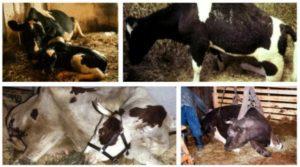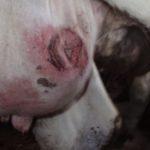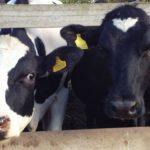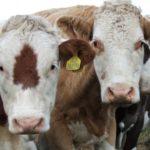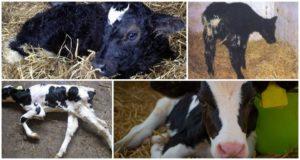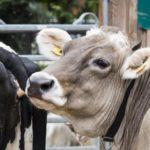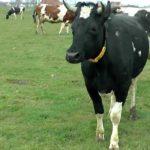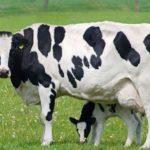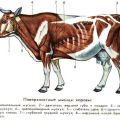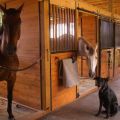Causes and signs of an abscess in a cow, cattle treatment and prevention
An abscess in a cow is understood as a limited formation that is filled with purulent contents inside. It appears under the skin. Most often, this problem is caused by a violation of the integrity of the epithelium. An abscess causes severe pain in the animal and poses a great danger to health and life. When an abscess ruptures, there is a risk of developing sepsis.
What is it and which parts of the body it affects
This term refers to an abscess or abscess that appears on a specific part of the cow's body. This abnormal mass is a separate cavity that is filled with pus. It appears as a result of purulent damage to loose tissue. Damage to other organs or tissues is also possible. Abscesses can be of different types:
- acute, subacute, chronic;
- aseptic, infectious;
- benign, malignant;
- deep, superficial;
- drip, cold, metastatic.
Pathology can lead to damage to different parts of the cow's body. These include muscle tissue, bone structures, subcutaneous tissue, internal organs, lymph nodes. The formation is often localized in the udder region.
When identifying and treating an abscess, it is important to carefully monitor the condition of the damaged area and systematically rinse it.
Reasons for the appearance
The most common cause of problems is a violation of the structure of the skin. The development of suppuration is due to the penetration of pathogenic microorganisms into the wound. It can be staphylococci, Pseudomonas aeruginosa, streptococci. Bacteria enter the damaged area in the following ways:
- Blood poisoning from haircuts, injections, or other medical procedures. This is very rare.
- Mechanical damage. In this case, a secondary infection often joins, which causes the formation of an abscess. Even minor damage can provoke active reproduction of pathogenic flora.
- Contact with chemicals. The cause of the problems is the effect of kerosene, turpentine or croton oil.

Signs of illness
It can be very difficult to identify an abscess, since its appearance is not accompanied by serious disorders in the body. At the same time, over time, there is a risk of the following symptoms:
- decrease or complete loss of appetite;
- an increase in temperature;
- general weakness associated with intoxication;
- constant anxiety - it manifests itself especially strongly when touching the affected area;
- the formation of a rounded seal under the skin;
- pain when touching the damaged area.
Diagnostic methods
The doctor diagnoses pathology according to the clinical picture. To confirm the diagnosis, you need to make a puncture of the affected area. Any compaction in the subcutaneous structures can be felt. When pressed, you can reveal a small depression. In this case, after a few minutes, it automatically returns to its original position.
It is important to consider that it is impossible to identify an abscess in the liver during the life of a cow, especially if this condition is not accompanied by the appearance of symptoms.
Methods for treating an abscess in cattle
If symptoms of inflammation are detected, it is recommended to immediately seek help from a veterinarian, especially with large areas of damage.
General recommendations
To avoid negative health effects, it is recommended to follow these rules:
- provide a sick cow with maximum rest;
- in the absence of aggression, warm the affected area;
- isolate the animal from the herd by providing a room with clean bedding;
- add Sulfadimezin to food.
With this diagnosis, it is strictly forbidden to apply cold compresses or massage. This causes the movement of microorganisms to healthy organs, which provokes their infection.
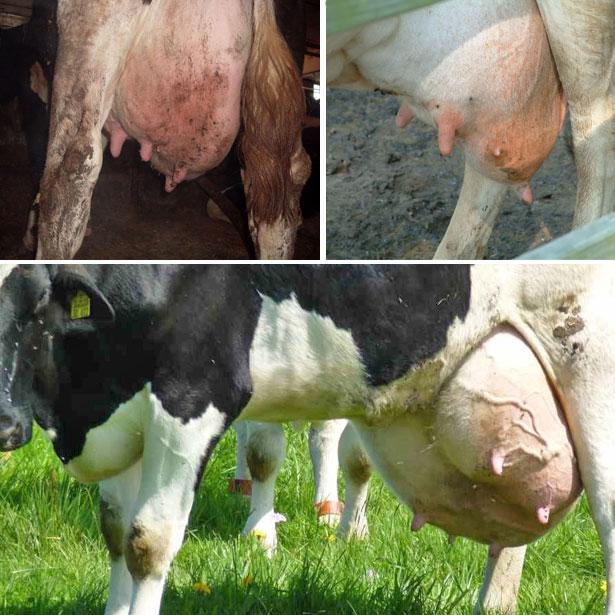
Lancing an abscess
It is recommended to open an abscess with strong tension on the walls of the organ. The procedure should be performed under local anesthesia.
To carry out the procedure, you should do the following:
- Puncture the abscess with a trocar with a tube. Through it, you need to remove a certain part of the pus.
- Insert a scalpel into the most protruding part and perform a dissection. This should be done before the granulation roller.
- Thoroughly clean and dry the cavity.
- Finally, fill it with drainage with Vishnevsky ointment.
- Apply a sterile bandage. It is recommended to change it every day.
When detecting a malignant formation, it is worth doing the following:
- Perform tissue incision with excision of the affected fragments.
- Stop the bleeding.
- Irrigate the opened abscess for a long time using a special disinfecting solution.
- Powder the wound with Tricillin.
- Drain the cavity with proteolytic enzymes.
It is impossible to remove a huge abscess with other methods. In such a situation, it is required to open it and perform an excision.
Drug treatment
Most often, the following drugs are used to eliminate an abscess:
- Desi spray;
- "Genta-10";
- "ASD-3";
- Dear balm No. 10;
- Vishnevsky ointment.
Preventive actions
The development of abscesses is rather slow. Therefore, it is important to identify pathology at the initial stage of development. To prevent the growth of the inflammatory process, it is worth adhering to the following rules:
- After walking, examine in detail the condition of the skin of the animals. If there is time, palpation is also worth it. When an abscess appears, it is possible to grope for a seal.
- Treat damaged areas with special antiseptics.
- Provide dry and clean bedding for cows. In the old layers, pathogenic bacteria often accumulate, which cause dangerous disturbances.
- Choose desert areas as pastures. It is desirable that there are no bushes or insects on them.
An abscess in a cow is considered a common problem with negative health consequences. To avoid complications, it is important to show the animal to the veterinarian in a timely manner.
